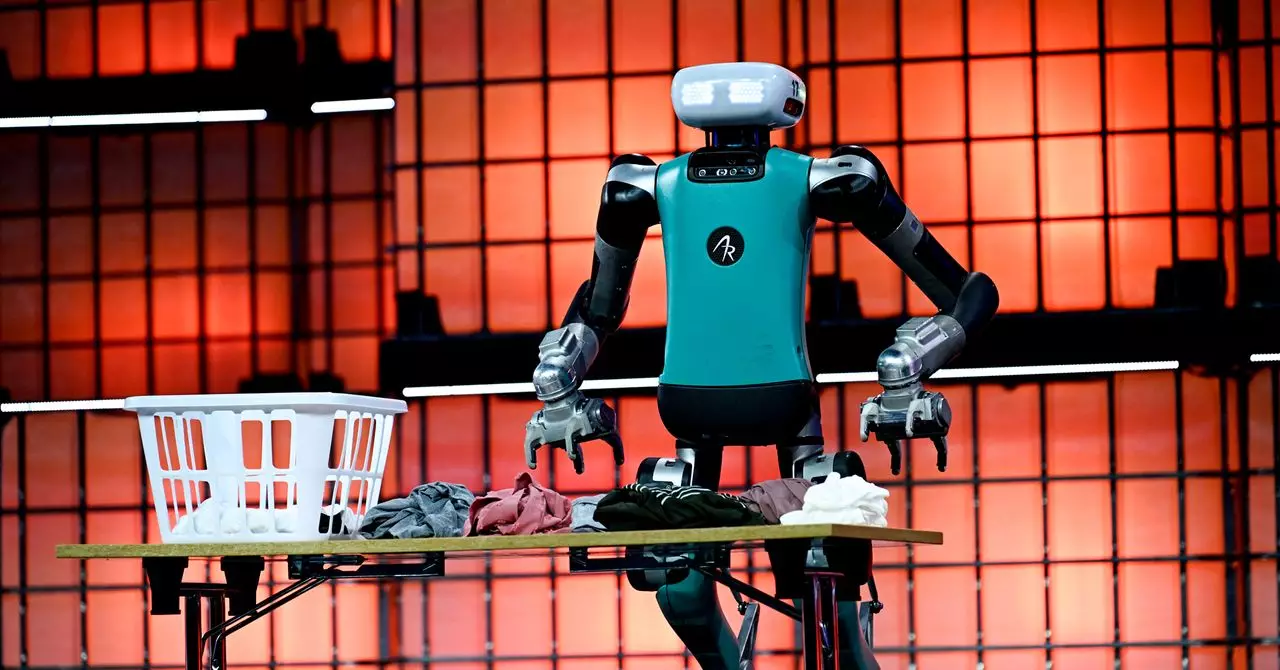In a landmark move set to reshape the manufacturing landscape, Boston Dynamics is poised to deploy its cutting-edge Atlas robot in a Hyundai factory later this year. This all-electric marvel represents a significant upgrade from its hydraulic predecessor, which has gained widespread attention through various viral video demonstrations since its inception in 2013. The introduction of Atlas into a real-world commercial manufacturing setting marks a pivotal moment not only for Boston Dynamics, which Hyundai acquired for a whopping $1.1 billion in 2021, but also for the broader industry. While the deployment of dogs-like Spot and warehouse-centric Stretch at industrial sites has already demonstrated the company’s technological prowess, Atlas signifies a push towards integrating humanoid robots into complex labor environments.
This evolution is not merely about automation; it reflects a paradigm shift in how we perceive robotics in the workforce. Kerri Neelon, a spokesperson for Boston Dynamics, emphasizes that Atlas is engineered to tackle the heavy lifting and physically awkward tasks that can pose challenges to human workers. This role of augmenting human labor rather than entirely replacing it is crucial in navigating the public sentiment surrounding automation, which often leans towards fear and skepticism.
Humanoids: A Trend on the Rise
The landscape for humanoid robots appears to be on the brink of a transformative breakout, especially with 2025 on the horizon as a potential benchmark year for the industry. Incremental advancements have been made, with Agility Robotics’ Digit already showing promise by moving items within warehouse settings. Companies like Figure are also introducing bipedal robots aimed at commercial use, hinting at a future where humanoid robots are commonplace in various industries.
Moreover, the tech giants are increasingly eyeing this developing market. Influential players like Apple and Meta are reportedly working on their own humanoid robots, which indicates confidence in the viability of such innovations. A recent Goldman Sachs report projects that humanoid robots could burgeon into a $38 billion market by 2035—an extraordinary leap from earlier estimates—a forecast that underscores the growing belief in the potential of these technologies to perform tasks traditionally reserved for human laborers.
One of the significant advantages of humanoid robots lies in their flexibility; they can potentially juggle various tasks similar to their human counterparts. Traditional automation has largely revolved around purpose-built systems designed to achieve high efficiency in specific tasks. While Jonathan Hurst, co-founder, and chief robot officer at Agility Robotics, acknowledges that such specialized systems will always outperform humanoid robots in speed and cost-efficiency, he argues that there is a niche for robots capable of adapting to different jobs. This adaptability reflects a fundamental shift in 21st-century manufacturing, where a more labor-diverse environment can lead to newfound productivity.
Challenges on the Horizon
However, the road to mainstream humanoid robotics is littered with hurdles that developers must surmount. Tesla’s highly anticipated Optimus robot has garnered significant attention since its announcement in 2021, yet its recent demonstration—revealing human-controlled bots—has raised concerns about the reliability of its autonomous capabilities. The question remains: how far along are we in achieving true autonomy in humanoid robots?
Elon Musk’s comments regarding Tesla’s ambition to manufacture “several thousand” units in 2025 hint at both optimism and uncertainty, particularly considering recent geopolitical tensions over rare-earth metal exports from China. Such limitations have the potential to derail progress in the robotics sector, causing delays that can have ramifications for companies striving to capitalize on this transformative technology.
Although the promise of humanoid robots in enhancing productivity and reducing manual labor is tantalizing, it is imperative to remember that widespread acceptance will take time. Adapting existing workplace environments and addressing fears surrounding job displacement will require clear communication and thoughtful integration strategies. In a world designed primarily for humans, it remains crucial to ensure that the introduction of robots is done in a way that doesn’t alienate the very workforce they are meant to assist. The future of humanoid robots may well hinge on navigating these societal dynamics effectively.


Leave a Reply